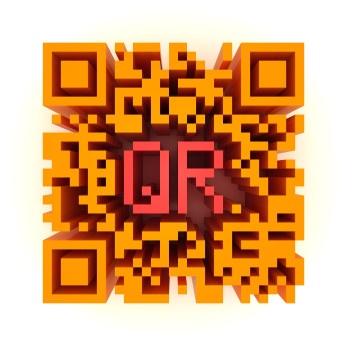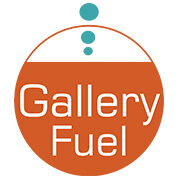QR codes are an art gallery marketing tool that should be in your toolkit. In the art industry, particularly for small art galleries, technology has typically played a minor role in marketing efforts because of limited time, staff, and financing.
Well… That is all changing now as the use of tech becomes a vital part of a gallery’s sales and marketing strategy.
QR codes became popular around 2010-2011 and then fell out of favor. However, as businesses look for new ways to integrate online and offline marketing efforts, the QR code is making a comeback. They have great potential for use in art galleries too.
Some of the benefits include their easy to create, inexpensive, and they’re user-friendly. QR codes are a tech-savvy way for an art gallery to promote their artists and events.
They can be used as an unintimidating education tool for potential buyers about artists, and add value to existing marketing experiences.
But perhaps most importantly, QR codes can help create engagement by integrating the online/offline experience your clients and prospects have with your gallery.
What Is a QR code?
Here is a little history. QR stands for Quick Response. In 1994, Denso-Wave, a subsidiary of Japanese carmaker Toyota, created QR codes to track parts in automobile manufacturing.
In their current application, QR codes link the online and offline worlds, making it easier for consumers to engage with brands. Similar to a standard barcode, QR codes are configured, so they contain encoded data read by a consumer’s smartphone via a free downloadable QR decoder application.
Today, these codes are widely used to attract potential customers and have become an integral marketing tool for Fortune 500 companies and small businesses alike.
How Do You Create QR codes for your Gallery?
Creating a QR code is simple, inexpensive, and only requires a few steps:
- Select a QR code generator. Just Google “create QR codes” to find several free options.
- Enter the URL for where you want the code to go – i.e., a website, video, Vcard, PDF, etc. Be sure to include a call to action or next step the viewer could take once they get there.
- Customize your code to reflect your gallery brand or something relevant to the content the code goes to.
- Test it to ensure the code scans properly and goes to the right file.
- Share it, print it, go wild
- Track and analyze its performance.
How Can Art Galleries Use QR Codes?
There are several simple ways that art galleries can use QR codes as part of an overall marketing strategy to promote the gallery.
Let’s look at a few places your gallery could use a QR code.
- Business cards: Along with contact information, add a QR code that directs people to the gallery’s social media accounts, Home, or About page on the gallery website. Now the client not only has immediate access to a wealth of information but can easily communicate with you as well.
- Gallery labels: Incorporating QR codes next to each piece of artwork throughout your gallery makes information about each piece quickly accessible to interested buyers. It is a useful strategy at an art fair booth or during an exhibition opening when the gallery is crowded. A quick scan would direct a prospect to the artist’s portfolio, biography, reviews, or video page on the gallery website. Use QR codes in the gallery to add additional value to the viewer’s experience.
- Window displays: Strategically placing a QR code in a gallery window provides curious window shoppers the opportunity to access information about the gallery, its artists, and upcoming events. Making the code available to foot traffic attracts potential buyers in several ways. Even when the gallery is closed, access to important information about the gallery and its artists is readily available.
- Print advertising, direct mail, and promotions: Use QR images on print materials to promote your gallery and upcoming events. If your gallery places ads in local or art industry print publications, incorporate a QR code to drive traffic to your gallery’s website or a landing page specific to the ad.
As you place codes in different places, be sure also to let viewers know what’s in it for them by scanning the code. You can’t just put a code in your gallery window and expect it to get a lot of love. Include a teaser.
Gallery QR codes could drive to any number of places to add value for a viewer.
- Social media pages
- Mailing list signup form
- E-commerce site such as artsy or your gallery’s online store
- Send a text message or emails, such as an invitation to an opening or VIP fair tickets.
- Video of an artist interview or virtual studio tour recording
- Contact or appointment form
To the Point
QR codes will not be the Holy Grail of marketing, but they are handy tools with almost no learning curve that will drive engagement.
Incorporating them into your art gallery marketing strategy enables you to share information with prospective art buyers to move them along in your sales cycle.
And that is what marketing is all about – Right?
Remember, to be most effective, ensure that your codes drive to a page or document optimized for mobile since that is how people will access your content.
Easy to create at little or no cost, these codes are a great way to boost a gallery’s marketing efforts while simultaneously allowing prospects and collectors to engage with the gallery.
The most significant benefit of using QR codes is to enhance and add value to non-digital marketing efforts.
Experiment and have fun with them. Post a comment below and share how your gallery uses QR codes.
You might also enjoy this article
How can using a Facebook pixel help your art gallery marketing?


My small company would like to design digital marketing platforms to market the art gallery, promotions and events that visitors can scan with their smartphones to get full information, vedio content, audio etc.
Please respond. Thank you.
Hello Thabiso,
I would like to help, but I’m not sure I understand what your question is. Would you like to set up a call so you can give me more information about your project? Send me an email from the contact form and I will respond to schedule sometime. I look forward to speaking with you.
Katherine